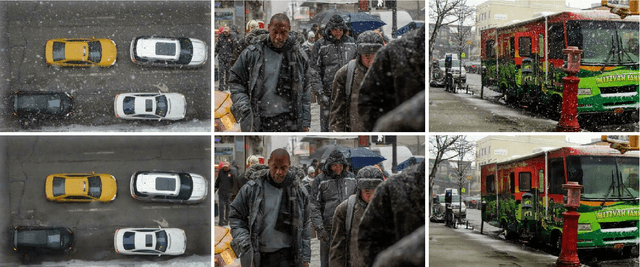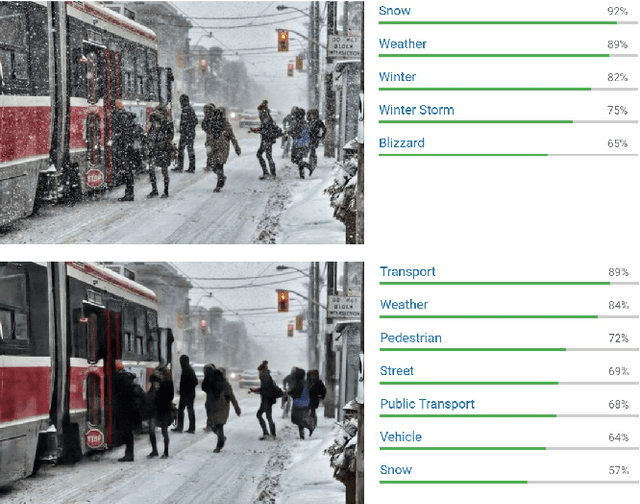DesnowNet: Context-Aware Deep Network for Snow Removal
Paper and Code
Aug 15, 2017



Existing learning-based atmospheric particle-removal approaches such as those used for rainy and hazy images are designed with strong assumptions regarding spatial frequency, trajectory, and translucency. However, the removal of snow particles is more complicated because it possess the additional attributes of particle size and shape, and these attributes may vary within a single image. Currently, hand-crafted features are still the mainstream for snow removal, making significant generalization difficult to achieve. In response, we have designed a multistage network codenamed DesnowNet to in turn deal with the removal of translucent and opaque snow particles. We also differentiate snow into attributes of translucency and chromatic aberration for accurate estimation. Moreover, our approach individually estimates residual complements of the snow-free images to recover details obscured by opaque snow. Additionally, a multi-scale design is utilized throughout the entire network to model the diversity of snow. As demonstrated in experimental results, our approach outperforms state-of-the-art learning-based atmospheric phenomena removal methods and one semantic segmentation baseline on the proposed Snow100K dataset in both qualitative and quantitative comparisons. The results indicate our network would benefit applications involving computer vision and graphics.
 Add to Chrome
Add to Chrome Add to Firefox
Add to Firefox Add to Edge
Add to Edge